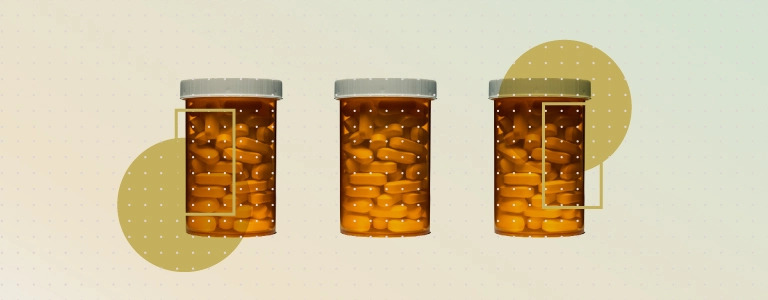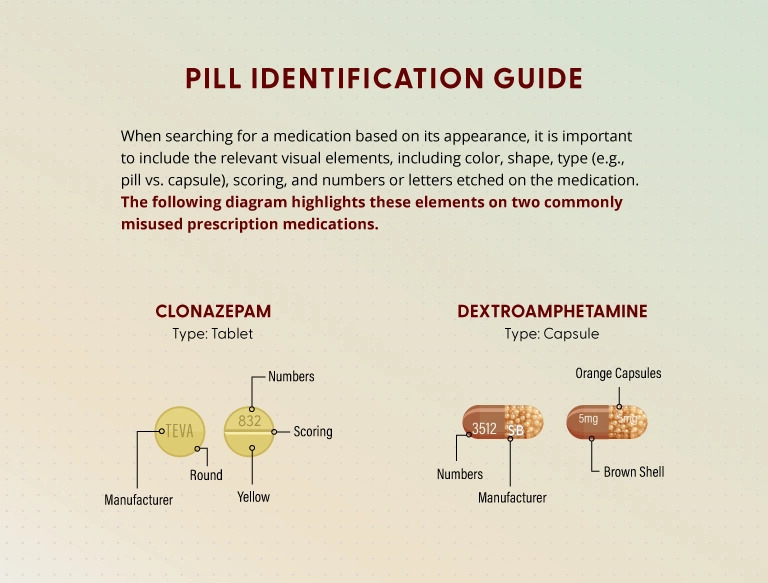Guide to Medication Safety

When researchers conducted a study on individuals ability to identify opioids, they made a concerning discovery: Despite the current push in healthcare to address opioid misuse, only 22% of Americans could successfully identify seven commonly prescribed opioids.
According to Brenna Morse PhD, RN, NCSN, CNE, president of the National Board of Certification for School Nurses, this study highlights a broader problem of lacking patient education regarding medication misuse.
“All medications and substances carry the potential for misuse,” Morse said. “If kids and adults do not know what medications they are being provided or why, that is a huge problem.”
Being able to identify common medications, including opioids, and knowing how to safely handle and dispose of medication when it is no longer needed is critical to prevent the misuse of prescription medicines. There are several steps parents can take to prevent medication misuse in their household, as well as strategies to talk to their children when they are concerned about possible misuse.
Preventing Medication Misuse in Teens
As defined by the U.S. Drug Enforcement Administration (DEA), medication misuse refers to any time an individual takes a prescription medication or over-the-counter (OTC) medicine not as directed.
Medication misuse can be intentional for the purpose of stimulating the brain in a way similar to the use of illicit drugs; it can also happen accidentally when patient education is lacking. For example, an individual may mix a medication with another substance that could lead to an adverse drug interaction. The continued misuse of medication can lead to addiction along with other health problems.
According to the National Institute on Drug Abuse (NIDA), the most commonly misused types of prescription medications are:
Central nervous system depressants such as diazepam, which is prescribed for anxiety.
Opioids such as oxycodone, which is meant to treat acute pain after an injury or surgery.
Stimulants such as dextroamphetamine, which is a common treatment for ADHD.
Prescription for Disaster: How Teens Misuse Medicine (PDF, 2.2 MB), a 2018 report from the the DEA, showed that:
16.8%
of high school students took a prescription drug without a provider’s prescription once or more in the past year.
6.2 Million
persons aged 12 years and older misused a prescription drug at least once in the past month.
Additionally, the report found that 40% of persons aged 12 years or older got the medication they misused most recently from a friend or relative for free.
“They are often getting it from their own house or the houses of friends and family,” Morse said. “They are not turning to elicit sources; it’s coming from places that are familiar to them.”
Preventive Medication Safety Measures for Parents
Morse said it’s important for parents to have a strong understanding of the medications prescribed to them as well as to their children. Asking a provider questions when a prescription is given to treat any condition can help inform medication safety strategies.
Questions to Ask a Provider About Prescription Medication
- How do I take the medication (e.g., after a meal, on an empty stomach)?
- What are some expected side effects of this medication?
- Is it possible to prescribe a few days’ worth of medication and allow refills as needed?
- Where can unused medication be dropped off or disposed of?
- What safety precautions should I take when storing this medication?
- Will there be a potential need for continued therapies after I finish this medication?
- Are there any vitamin supplements or OTC medicine I should not take while on this prescribed medication?
- What action should I take in case of an emergency (e.g., call poison control, seek emergency care)?
In addition to engaging in patient education, Morse also recommends the safe storage of prescription and OTC medicine to minimize the risk of intentional or unintentional misuse by other members of the household.
Medication Safety Do’s and Don’ts
DO:
- Keep OTC medicine, vitamins and supplements in cabinets and out of the reach of children.
- Put prescription medications at risk of being misused (e.g., opioids) in a locked container or cabinet.
- Learn how and where unused medications can be safely disposed of.
DON’T:
- Ignore the potential risks of OTC medicine, vitamins and other supplements.
- Leave prescription medications at risk for misuse in places that are easily accessible.
- Keep medication that is expired or no longer being used in your household.
What to Do When You Suspect Prescription Drug Misuse
If unidentified pills are found in a household or a parent otherwise suspects their child may be misusing medication, it’s important to address the situation with care.
“The initial approach is really going to depend on the family’s relationship. Some parents might feel confident in approaching the other household members,” Morse said. “[However], given their past interactions, their challenges and experience with other household members, this may or may not lead to an open and productive conversation about the issue.”
If the situation does need to be addressed delicately, Morse first recommends identifying the found pills using an online search. While medication libraries such as Pill Identifier exist, Morse said that simply typing a visual description of the pill into a web search can also yield helpful results. This method should not be relied on entirely but can serve as a starting point for concerned adults.

Potential Indicators of Medication Misuse
It is critical for parents and adults who work with children to be able to spot potential prescription misuse in teens. However, many of these behavioral and physical changes may be related to other emotional and mental health issues.
ENVIRONMENT
- Prescription orders on your pharmacy record that were not made by you
- Missing medication from your medicine cabinet
PHYSICAL
- Fatigue
- Red and/or glazed eyes
BEHAVIOR
- Noticeable decreased interest or increased obsession with school work
- Withdrawal from family activities
- Sudden lack of interest in their hobbies and usual activities
- Changes in mood, such as negative attitude, increased irritability or personality changes.
Source: “Talking to Your Kids About Prescription Drug Abuse: Not Worth the Risk (for Parents).” SAMHSA.
How to Talk to Teenagers About Medication Misuse
ADDRESS MISCONCEPTIONS
Teenagers may accept common misunderstandings about prescription medications, believing that they are safer than illegal drugs or not at risk of addiction.
ANSWER THEIR QUESTIONS
Some teenagers may know less about the risk of medication misuse compared to that of illegal drugs.
BUILD HEALTH LITERACY
Encourage teens to empower themselves with information when they receive a prescription from their provider by asking questions (e.g., what side effects they should be aware of).
KEEP IT CASUAL
Choose informal times to talk with teenagers.
- For parents: in the car, during dinner, while watching TV
- For educators: lunch break, downtime during class
PROVIDE RESOURCES
Leverage information sources created specifically for teenagers, such as the National Institutes of Health (NIH) publication called Opioid Facts for Teens.
Resources for Further Reading
- Misuse of Prescription Drugs Research Report – National Institutes of Health (NIH)
- Pill Identifier
- Prescription Drug Abuse (for Teens) – KidsHealth
- Prescription Drug Facts, Effects, Teen Use – NIDA for Teens
- Prescription for Disaster: How Teens Misuse Medicine – U.S. Drug Enforcement Administration (DEA) (PDF, 2.2 MB)
- Prescription & Over-the-Counter Medication – Partnership to End Addiction
- Prescription Safety – Centers for Disease Control and Prevention (CDC)
- Talking to Your Kids About Prescription Drug Abuse: Not Worth the Risk – Substance Abuse and Mental Health Services Administration (SAMHSA)
- What Classes Of Prescription Drugs Are Commonly Misused? – National Institutes of Health (NIH)
Please note that this article is for informational purposes only. Individuals should consult their health care provider before following any of the information provided.

